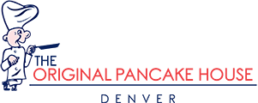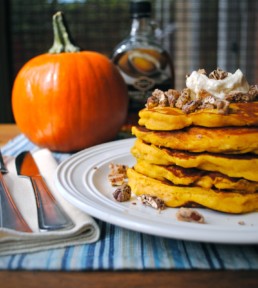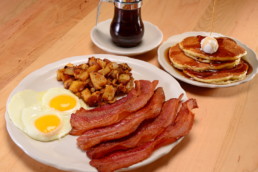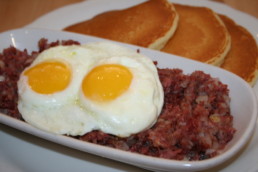Joe’s Special: The Breakfast Dish You’ve Never Tried?
 Joe’s Special is one of those breakfast dishes that shows up on just about every menu, but you might not have tried it before. It’s not quite as universally known and loved as pancakes, a Denver omelette, or Eggs Benedict, but it seems to always be around and definitely has a dedicated audience of fans. Many people may have grown up eating this dish at home, rather than in restaurants. It’s quick and easy to prepare, affordable, filling and can even stand in as dinner. So, what do you know about Joe’s Special and where it came from?
Joe’s Special is one of those breakfast dishes that shows up on just about every menu, but you might not have tried it before. It’s not quite as universally known and loved as pancakes, a Denver omelette, or Eggs Benedict, but it seems to always be around and definitely has a dedicated audience of fans. Many people may have grown up eating this dish at home, rather than in restaurants. It’s quick and easy to prepare, affordable, filling and can even stand in as dinner. So, what do you know about Joe’s Special and where it came from?
This simple and tasty dish is basically a scramble made with ground beef, spinach and eggs. Some variations add mushrooms or onions. An Italian Joe is made with sausage (that’s how we make it) and a Mexican Joe is made with chorizo. The dish originated in San Francisco at a popular restaurant called Original Joe’s. The restaurant opened in 1937 and served classic Italian-American fare. Joe’s Special became a popular dish at many local restaurants, and with home cooks, but the version at Original Joe’s is known as “famous” thanks to a proclamation by San Francisco Mayor Ed Lee. In 2007 the restaurant closed due to a fire. When it re-opened in a new location the mayor commemorated the event with the proclamation.
Join us at The Original Pancake House and try our Joe’s Special, we know you’ll join the proud ranks of fans.
October is National Apple Month
An apple a day will keep the doctor away and help you celebrate National Apple Month.
Would it be fair to say that apples are the favorite fruit of Americans? We love them fresh for snacking or prepared in all kinds of ways, especially pie. In fact, apple pie has become known as a symbol of American prosperity and national pride. October is National Apple Month, so what better way to celebrate the apple then by eating them. We suggest you pay homage to this delicious fruit by enjoying the Apple Pancake at The Original Pancake House.
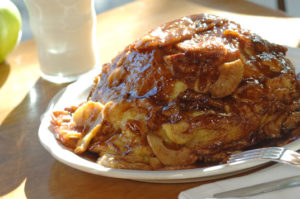
Here are some fun facts about the apple that may help you to appreciate this jewel of nature a little more.
- 2,500 varieties of apples are grown in the U.S. and 7,500 worldwide.
- Apples float because 25% of their volume is air.
- The annual apple crop grown in 35 states averages over 200 million bushels.
- The average U.S. consumer eats 19 pounds of fresh apples every year, that’s about one every week.
- The science of apple growing is called pomology.
- The word apple has five letters. Apple blossoms have five petals. The blossoms form in clusters of five. The star you see when you cut into an apple is from the five seed cavities.
- Apples are a member of the rose family.
- Apples were introduced to the New York area in the 1600’s by European settlers who brought seeds with them.
- The apple that hit Sir Isaac Newton on the head is believed to be the Flower of Kent variety.
- Washington state produces more apples than any other in the country.
Pumpkin Season is in Full Swing
The days of just pumpkin pie are gone, now the seasonal squash is showing up in everything.
Fall is officially here and you know what that means? Pumpkin spice everything! Pumpkin seems to be a bit polarizing; people either love it or hate it. But there is no denying that in the last decade it has evolved from simply a pie at the Thanksgiving table to a booming industry of its own.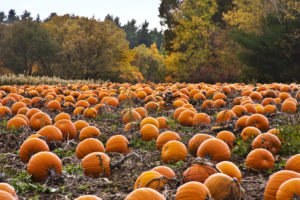
Speaking of pumpkin pie, whether or not it was actually included in the first Thanksgiving celebration is debated by many. Some say it wasn’t served until the second Thanksgiving. One thing is for sure, it was not made in the pie form that we know today. Early versions of the pie were made by hollowing out a squash and filling it with milk, honey and spices before baking.
Here is some fun pumpkin related trivia to help you get in the spirit of the season.
- 13% of Americans say pumpkin pie is their favorite, second to apple.
- It’s believed that the squash originated in Central America. Seeds from related plants were found in Mexico that dated back to 5500 B.C.
- In early folk medicine they were suggested as a way to get rid of freckles and a remedy for snake bites.
- A man named Stephen Clarke currently holds the Guinness World Record for fastest carving of a single pumpkin. On October 31, 2013 he carved a jack o’ lantern in 16.47 seconds.
- The largest pumpkin pie on record was made on September 25, 2010 and tipped the scales at a whopping 3,699 pounds.
- Pumpkin pie made in a crust first appeared in the 1796 cookbook American Cookery by Amelia Simmons.
If you're in the mood for pumpkin pancakes, we highly recommend you come try ours at The Original Pancake House!
Our Dutch Baby Makes a Delicious and Unique Breakfast
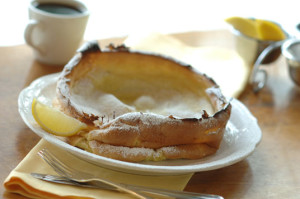 Have you tried our Dutch Baby Pancake before? If not, you have really been missing out! This dish isn’t your typical pancake. It is oven baked, rich and fluffy. We serve it with lemon, butter and powdered sugar. The Dutch Baby makes for a tasty breakfast that is just slightly off the beaten path.
Have you tried our Dutch Baby Pancake before? If not, you have really been missing out! This dish isn’t your typical pancake. It is oven baked, rich and fluffy. We serve it with lemon, butter and powdered sugar. The Dutch Baby makes for a tasty breakfast that is just slightly off the beaten path.
The Dutch Baby, also known as a German Pancake, Bismarck or Dutch Puff, is more like a popover than a traditional pancake. It is a descendant of the German pancake called Pfannkuchen. A batter made with lots of eggs plus milk, flour, sugar, and vanilla is poured into a cast iron skillet that has been preheated in the oven. The Dutch Baby puffs up very tall like a soufflé when baked in the hot oven, then it falls when it is removed. The resulting dish is rich and eggy, almost custard-like in the center, with crispy brown edges. It is truly a culinary treat!
The Dutch Baby is one of our specialties at The Original Pancake House. We like it served the traditional way but if you want to try making one at home you could dress it up many different ways. They are delicious with fresh fruit and fruit sauces, butter and maple syrup, peanut butter and jam, or yogurt and berries. You could even leave the sugar out of the batter and top your Dutch Baby with savory items like bacon and eggs.
What’s on Top? America’s Favorite Waffle Toppings
At The Original Pancake House we are all about the toppings. Whether it’s our famous pancakes or our crispy Belgian waffles, the meal is made so much more tasty with a variety of toppings (and ingredients cooked inside, for that matter). When it comes to waffle toppings, butter and maple syrup are the king and queen of breakfast. Those deep pockets in the waffle are just made for pooling up the good 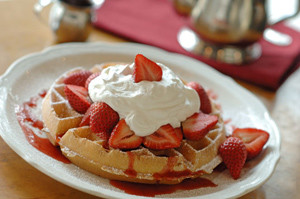 stuff. Whipped cream and strawberries are the classic choices when it comes to Belgian waffle toppings. But what else are Americans putting on their waffles? The website National Today surveyed 1,000 Americans to discover their top 10 favorite waffle toppings and here is what they found.
stuff. Whipped cream and strawberries are the classic choices when it comes to Belgian waffle toppings. But what else are Americans putting on their waffles? The website National Today surveyed 1,000 Americans to discover their top 10 favorite waffle toppings and here is what they found.
- Maple Syrup – 62%
- Butter – 10%
- Fresh Fruit – 8%
- Peanut Butter – 4%
- Fruit Sauce – 4%
- Nutella – 4%
- Chocolate – 3%
- Honey – 2%
- Jam/Jelly – 2%
- Apple Butter – 2%
If you’re making waffles at home (try them for breakfast or dinner!) and looking for some unexpected and delicious toppings, here’s a few you may want to try.
- Cream cheese and jam/jelly
- Lemon curd and fresh blueberries
- Peanut butter and bacon
- Ice cream
- Avocado, tomato and onion
- Poached eggs, Canadian bacon and hollandaise sauce
- Turkey and gravy
Bacon Has a Delicious History
Once primarily found on the breakfast table, bacon is now the star of the menu all day long.
If you love bacon as much as we do, it’s hard to imagine the breakfast plate without a few slices of this crispy, salty treat. Americans have had a long-standing love affair with it and it's not hard to understand why. While our favorite pork dish has become extremely trendy in recent years, it has actually been around for a very long time.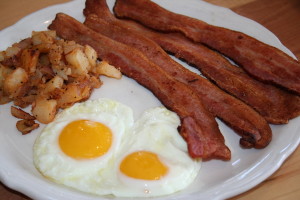
The process of salting meats has been a method of preservation since virtually the beginning of civilization. Ancient man had to make food last in order to survive and did this through methods like salting and drying. The Chinese were curing pork bellies in salt as early as 1500 B.C., which is believed to be the earliest form of the dish. This practice may have started out as necessity but it evolved into culinary techniques that created a variety of delicious foods, including our beloved bacon.
The word itself has roots in French and German, but in 16th century England the word bacoun was used to refer to pork in general. By the 17th century salted and smoked pork belly was being called bacon. You’ve probably noticed that today the meat is no longer the darling of just the breakfast table. Chefs, restaurants and foodies all over the world are embracing it as a gourmet ingredient in every meal including dessert.
If you’re a fan of bacon we highly suggest you try our Bacon Belgian Waffle and Bacon Pancakes. We add it right into the batter so it adds a salty crunch to your breakfast favorites. Topped with butter and maple syrup, it really can’t be beat!
Bread is the Foundation of the Breakfast Menu
Bread has been around for thousands of years and plays a major role on the breakfast menu.
Bread is an important part of the diet for people all around world. In America bread is a fixture on the breakfast menu. It is one of 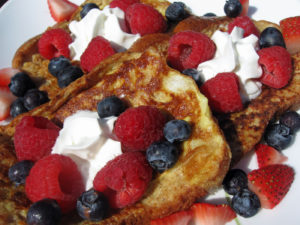 humanity’s oldest forms of prepared food. It is believed that bread started off as a simple dish made from extracting the starch from plants by pounding them and then spreading the starch on flat rocks that were then cooked over fires. When agriculture started to spread around 10,000 BC at the start of the Neolithic age, the cultivation of grains and the presence of natural wild yeast made bread an important staple. With just two main ingredients, flour and water, endless varieties of bread can be made.
humanity’s oldest forms of prepared food. It is believed that bread started off as a simple dish made from extracting the starch from plants by pounding them and then spreading the starch on flat rocks that were then cooked over fires. When agriculture started to spread around 10,000 BC at the start of the Neolithic age, the cultivation of grains and the presence of natural wild yeast made bread an important staple. With just two main ingredients, flour and water, endless varieties of bread can be made.
Fast forward thousands of years to the creation of the modern restaurant and you’ll see bread, and related baked items all over the menu, particularly at breakfast. Where would the breakfast menu be without bread? Can you imagine life without biscuits, pancakes, waffles and French toast?
Here’s some fun facts about bread to help you appreciate the hero of the breakfast menu.
- The automatic bread slicing machine was invented by Otto Rohwedder in 1928.
- The outside of the loaf is called the crust and bakers refer to the inside as the crumb.
- Americans consume on average 53 pounds of bread per year.
- Farmers receive approximately 5 cents (or less) from each loaf of bread sold.
- A single bushel of wheat will make 73 loaves (one pound each) of bread.
- The color of the twist-tie on loaves of bread designates which day of the week the bread was made. However, manufacturers use their own color code so no one color applies to every type available.
The Many Lives of the Pancake Breakfast
Flapjacks, hotcakes, johnnycakes…are they relatives of the pancake?
Pancakes are a very popular choice for breakfast all over the country. You’d probably have a hard time finding someone who doesn’t enjoy a short stack of fluffy pancakes, topped with butter and maple syrup. They’re equally delicious when served simply, or dressed up in many different ways.
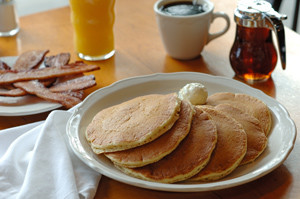 The pancake goes by several other names including flapjacks, griddlecakes and hotcakes. All of these items are the same basic ingredients and cooking method, they just may be called a different name depending on region and the restaurant. Typically, in the U.S. flapjacks and pancakes are the same thing, the name is just used regionally. However, you may find some restaurants calling pancakes that are either a little smaller, or larger, than normal, “flapjacks.” Silver dollar pancakes are simply named for their size. In England, a flapjack is not a pancake at all, but a type of sweet bar cooking made from oats.”
The pancake goes by several other names including flapjacks, griddlecakes and hotcakes. All of these items are the same basic ingredients and cooking method, they just may be called a different name depending on region and the restaurant. Typically, in the U.S. flapjacks and pancakes are the same thing, the name is just used regionally. However, you may find some restaurants calling pancakes that are either a little smaller, or larger, than normal, “flapjacks.” Silver dollar pancakes are simply named for their size. In England, a flapjack is not a pancake at all, but a type of sweet bar cooking made from oats.”
A johnnycake is a small pancake made from cornmeal, salt and hot water or milk, rather than wheat flour. Johnnycakes were a staple item for early Americans and now they are very popular in New England, particularly Rhode Island. The South also makes this dish but it is called a hoecake.
Crepes, like those we serve at The Original Pancake House, are very thin pancakes made from flour, milk and eggs. They are very popular in France, Belgium and Switzerland and are served in a variety of ways, both sweet and savory.
Battle Breakfast Restaurants: Hash Browns vs Home Fries
Which do you prefer at breakfast restaurants, hash browns or home fries?
Potatoes show up on the menu at breakfast restaurants almost as much as eggs do. The potato is one of America’s favorite starches and we enjoy them at any time of the day. But potatoes go particularly well with breakfast and show up mostly in the form of hash browns or home fries, the two most popular sidekicks to your eggs.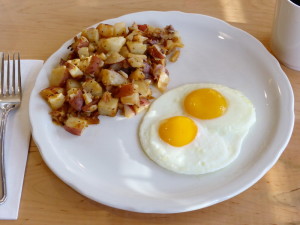
When it comes to the battle of hash browns vs home fries, let’s start with the difference between the two. Hash browns (or hashbrowns and hashed browns), are traditionally shredded potatoes that are pan fried to a golden brown. Home fries are made from cubed or diced potatoes. They are fried up along with onions and often bell peppers. Hash browns and home fries are staple items of breakfast restaurants around the country. The first known mention of “hashed browned potatoes” is by food author Maria Parloa in 1888. Over time the name was shortened to its current form.
At The Original Pancake House we prefer home fries because they have more texture as well as more flavor with the addition of onions and seasonings. We think they have a bit more personality and are more “homey” than the simple shreds of hash browns. They make a great side dish to many of our fantastic breakfast dishes.
What’s for Breakfast in Denver? Many Say Cereal
A great breakfast in Denver can be as elaborate as Eggs Benedict, or as simple as cereal.
Breakfast cereal is something that millions of Americans reach for to get their day started off right. In fact, it’s so popular that 2.7 billion boxes are sold each year. Breakfast cereal ranks number four in the top ten packaged goods in U.S. retail stores. When you go out for breakfast in Denver more than likely you are not ordering a bowl of cereal. But 31% of Americans who do eat breakfast, reach for cereal.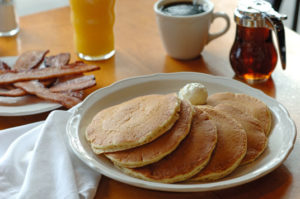
While the practice of eating grains for breakfast has been around since ancient times, the first breakfast cereal was invented in 1863 by James Caleb Jackson. The cereal, called Granula, never really caught on because the heavy bran nuggets required an overnight soak in order to make them soft enough to eat, which is not very convenient. John Harvey Kellogg began experimenting with cereals when he worked as the medical superintendent for the Western Health Reform Institute. In 1895, he launched the Cornflakes brand, which became an overnight sensation. His brother, William K. Kellogg, worked with him until 1906 when he branched out on his own, bought the rights to Cornflakes and started the Kellogg Toasted Corn Flake Company. Charles W. Post, who was a former patient of Kellogg’s at the Western Health Reform Institute, became interested in cereal after his stay there. He introduced Grape Nuts in 1898 and became an early innovator of breakfast cereals, along with Kellogg.
Cereal certainly makes for a convenient and affordable breakfast in Denver. But we highly recommend you start your day with something hearty and delicious, like what we’re cooking from scratch at The Original Pancake House.
Want to learn a little more about cereal? Check out these fun facts.
Defining “Two Eggs, Cooked Any Style”
When you dine with us at The Original Pancake House, you’ll notice that many dishes on our menu come with your choice of two eggs, cooked any style. You probably know that “two eggs, any style” is a very popular offering at most breakfast restaurants. And you probably know exactly how you prefer your eggs cooked. But what about all the other styles of cooking eggs, including what is a basted egg? Do you know what those mean? Allow us to eggsplain.
 Over Easy – Fried on one side and then flipped and cooked briefly on the other side so that the white is not cooked through, and the yolk is still runny.
Over Easy – Fried on one side and then flipped and cooked briefly on the other side so that the white is not cooked through, and the yolk is still runny.
Over Medium – Fried on one side and then flipped and cooked until the white is set and the yolk is thickened but still runny.
Over Hard – Cooked on both sides until the white and yolk are fully set.
Sunny Side Up – Cooked on one side only until the white is set and the yolk is still runny.
Basted Eggs – What is a basted egg? it is like sunny side up, but the top is cooked by spooning hot fat from the pan over the eggs. This can also be done with water or other liquid for a version that is lower in fat.
Poached – Cooked without the shell in simmering liquid, usually water. The perfect poached egg has a runny yolk and fully cooked whites.
Shirred (or baked) – Eggs cracked into a ramekin or small baking dish, usually topped with a small amount of cream or milk, and baked until the whites are firm, but the yolk is funny.
Hard Boiled – Cooked in the shell in boiling water until the white and yolk are both completely set – this is one method of cooking eggs. But what is a basted egg? It’s another style worth exploring.
Soft Boiled – Cooked in the shell in boiling water briefly to varying degrees of doneness.
Scrambled – Raw eggs are mixed first before cooking in a skillet. They are gently mixed and moved while cooking to develop soft, small curds.
Bacon & Eggs? The Most Iconic Breakfast in Denver?
How exactly did this classic combination become known as the most iconic breakfast in Denver and around the country?
Breakfast means a lot of things to people. For nearly four in ten adults breakfast is that meal they never eat. For some people breakfast means coffee. And for millions of us, when we think of the most important meal of the day, we’re thinking about the iconic breakfast combination of bacon and eggs. If you’re looking for the perfect breakfast in Denver then you’re bound to run into these favorites all over.
 Do you know how bacon and eggs became the breakfast standard in this country? About a hundred years ago breakfast was usually meatless. Most people ate some kind of grain porridge, fruit and often coffee. But thanks to Edward Bernays, who is regarded as the father of public relations, bacon became the king of breakfast. Bernays was the nephew of Sigmund Freud and he made his career using psychology to get people to buy a product or an idea. In the 1920’s the Beech-Nut Company, which sold a variety of products, hired Bernays’ agency to increase consumer demand for bacon. Bernays naturally went to his in-house doctor and asked him if a heavier breakfast would be a better idea for the American public. The doctor of course agreed and asked 5,000 of his physician colleagues to confirm this idea. So the “study” that found that doctors believed a breakfast of bacon and eggs was a better choice was published in major newspapers of the time and Beech-Nut’s sales of bacon skyrocketed.
Do you know how bacon and eggs became the breakfast standard in this country? About a hundred years ago breakfast was usually meatless. Most people ate some kind of grain porridge, fruit and often coffee. But thanks to Edward Bernays, who is regarded as the father of public relations, bacon became the king of breakfast. Bernays was the nephew of Sigmund Freud and he made his career using psychology to get people to buy a product or an idea. In the 1920’s the Beech-Nut Company, which sold a variety of products, hired Bernays’ agency to increase consumer demand for bacon. Bernays naturally went to his in-house doctor and asked him if a heavier breakfast would be a better idea for the American public. The doctor of course agreed and asked 5,000 of his physician colleagues to confirm this idea. So the “study” that found that doctors believed a breakfast of bacon and eggs was a better choice was published in major newspapers of the time and Beech-Nut’s sales of bacon skyrocketed.
Bacon and eggs may have become America’s favorite breakfast thanks to a little psychology, but most of us can probably agree that the delicious, protein-packed pairing has rightfully earned its place on our table and in our hearts and stomachs.
